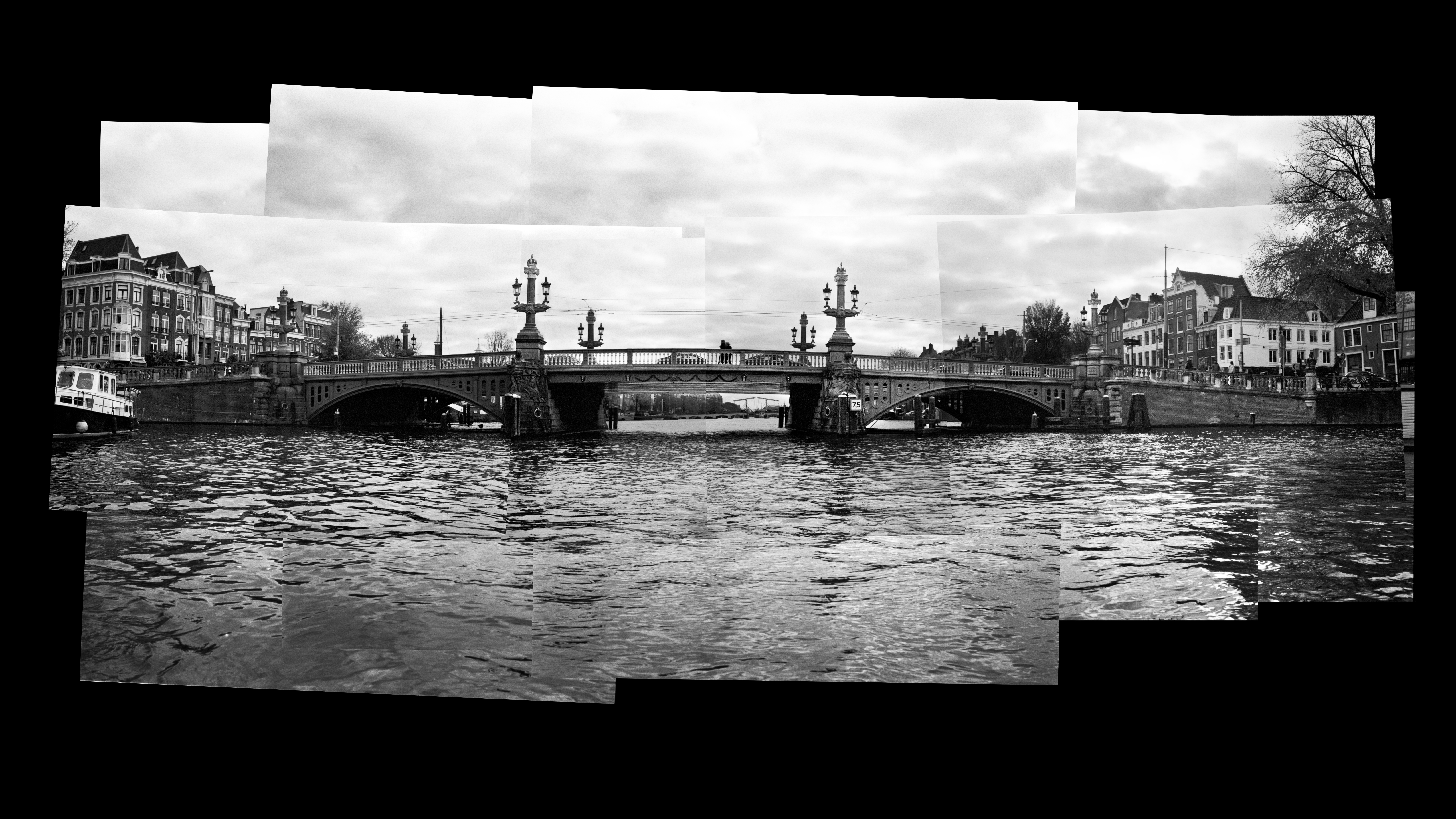Panurbana 145 Blauwbrug
If magnifying glass does not appear, reload the page.

Panurbana 145
Blauwbrug
Amsterdam Atlas
collage: 15 photos
format: 115 x 60 cm
Bridge number 236, better known as the Blauwbrug, was designed by the architects
B. de Greef (1818-1899) and W. Springer (1815-1907) and built in 1883.
The architects were probably inspired by the Parisian Alexander III bridge over the Seine.
Springer's son, Jan Springer (1850-1915), designed the decorations: the balustrades, the imperial crowns
and the eight columns with a ship shape halfway, which function as supports for the double lanterns.
There used to be a wooden drawbridge (such as the Skinny bridge), but the city council wanted
to renew the bridge to be able to build a tram connection over the bridge.
Half of the construction costs were paid by the Amsterdam Omnibus Company.
The name Blauwbrug comes from the previous bridge whose railings were painted blue.
Other names of the bridge are: Leeuwenbrug or Bloubrik (Yiddish), because the bridge
connected the city with the island of Vlooienburg.
